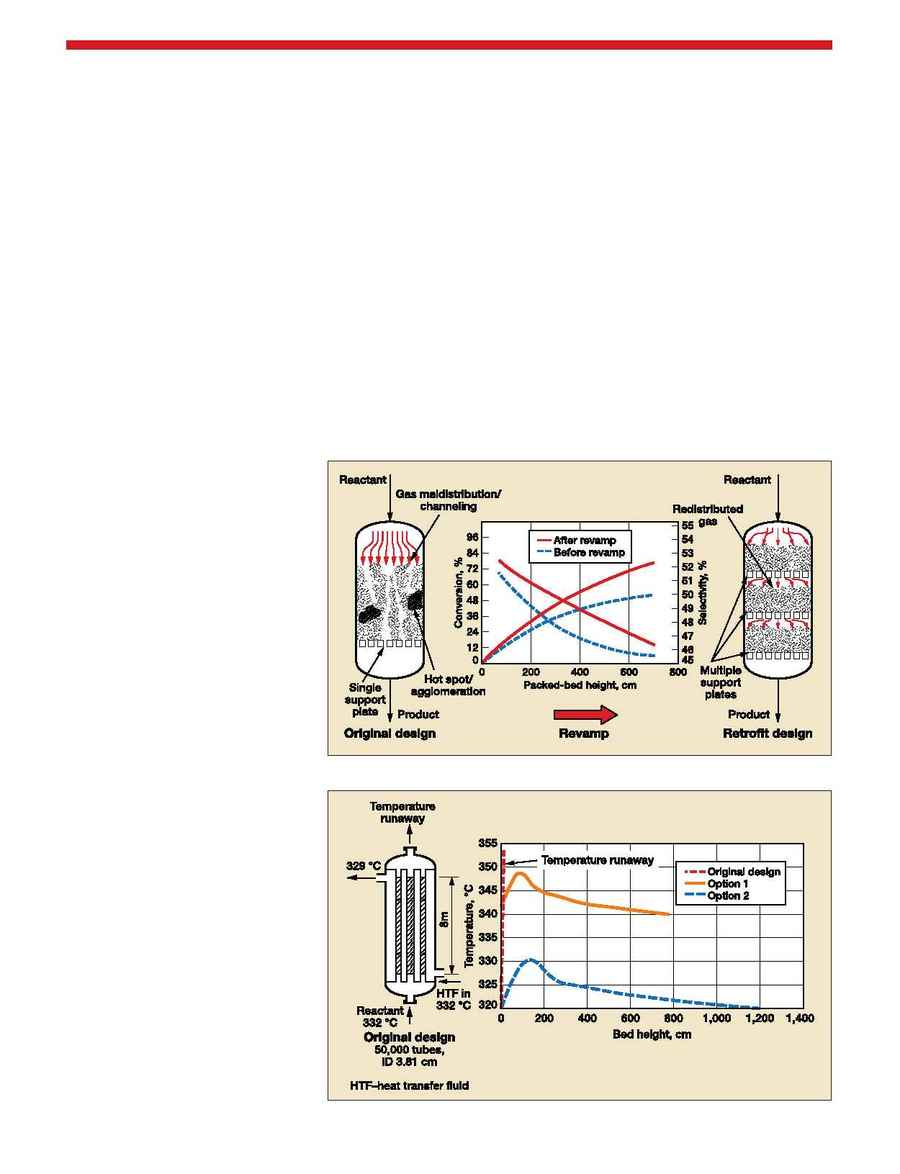
HYDROCARBON PROCESSING / SEPTEMBER 1999
Several examples utilize a general
model to optimize and speedup
process upgrades
S. Dutta
and R. Gualy, GTC Technology Corp.,
Houston, Texas
P
rocess reactors do not function well due to several
reasons--normal aging and improper design or
operating conditions. Very little can be done to
reverse the effects of aging. However, action can be
taken to correct poor design. Several case studies
demonstrate the scope and opportu-
nity for revamps and upgrades using
a general reactor model.
To remain competitive, HPI oper-
ating companies must consider
revamping under-performing reac-
tors. Reactors are the heart of pro-
cessing plants. A revamp can boost
the processing facility's yield and pro-
ductivity. Due to more restrictions
from environmental regulations,
revamps also facilitate reducing
and/or eliminating hazardous wastes
from effluent streams.
Candidate reactors for revamps
fall into two categories--units that
are under-performing or malfunc-
tioning and the others that are per-
forming normally. Catalytic gas-solid
reactors will be the primary focus.
Several examples illustrate the ben-
efits of using a general model for two
key commercial reaction systems--
acrylonitrile and maleic anhydride.
A general reactor model should
predict the performance of a variety
of reactor configurations, and design
and operational options for any given
reaction or catalyst system. Con-
versely, the user should be able to
estimate performance for any known
reaction system or catalytic activity
for a given reactor with the aid of a
general model. Such modeling is thus
applicable to any combination
between the reaction system and con-
figuration. Thus, the user can deter-
mine the optimal design or revamp
option for an existing reactor with
these tools. Details regarding such a
model and how to use it is available in an earlier paper
by the authors.
1
Under-performing or malfunctioning reactors.
In
processing units, under-performing or malfunctioning
reactors fall into two subcategories--ones due to normal
aging and others due to improper design or operating
conditions. Examples of aging reactors are:
·
Falling yield or productivity due to expected decay
of catalyst activity over time
·
Circulation line capacity loss due to sticky fines
buildup in line segments
·
Plugging of fluid distributors with fine solids,
Overhaul process reactors
,,
,,
yy
yy
,,
yy
,,
yy
,,
,,
,,
yy
yy
yy
,
,
,
y
y
y
,,
,,
,,
yy
yy
yy
,,
,,,,
,,
Fig. 1. Revamp of a packed-bed catalytic reactor with gas maldistribution.
,,
,,
,,
Fig. 2. Revamp of a tubular fixed-bed reactor with temperature runaway problems.
PROCESS TECHNOLOGY
